“First is forever,” reverberated through the air on the night the Expeditions 7 team celebrated becoming the first to drive a 4×4 vehicle on all seven continents. The moment Expedition Leader Scott Brady congratulated his team, those in attendance simultaneously played a personal reel, mental images flashing in quick succession: narrowly avoiding jail in Russia; enduring mucky recovery efforts in the dark; being surrounded by elephants, hippos, and crocodiles in the Okavango Delta; launching over endless sand dunes; bisecting Antarctica with up to 40 consecutive hours of driving. These highs and lows led to the instant the tires of a record-breaking Land Cruiser named Fernweh touched South America, its seventh continent.
Rare achievements like this have one quality in common. They are characterized by a point in time when surging toward a goal mutates into gazing over the shoulder at the accomplishment. In turn, April 2022 is an appropriate time for the overlanding community to look back 10 years to the launch of the historic Expeditions 7.
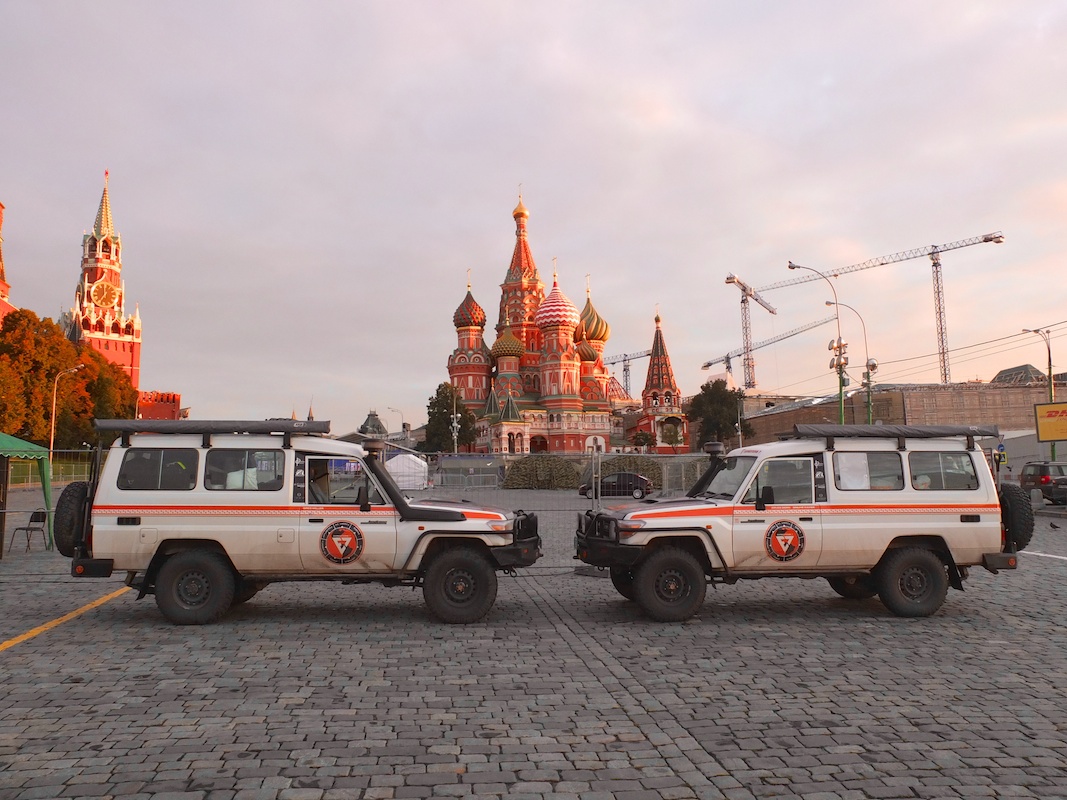
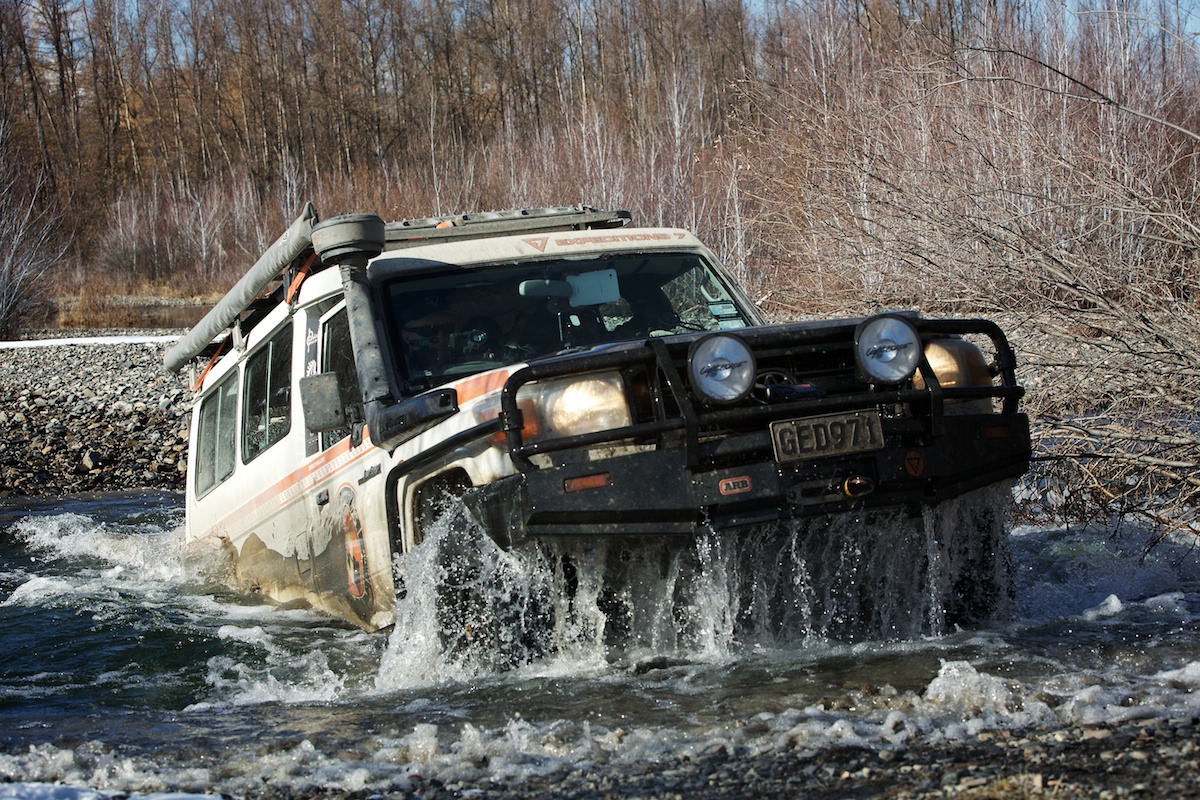
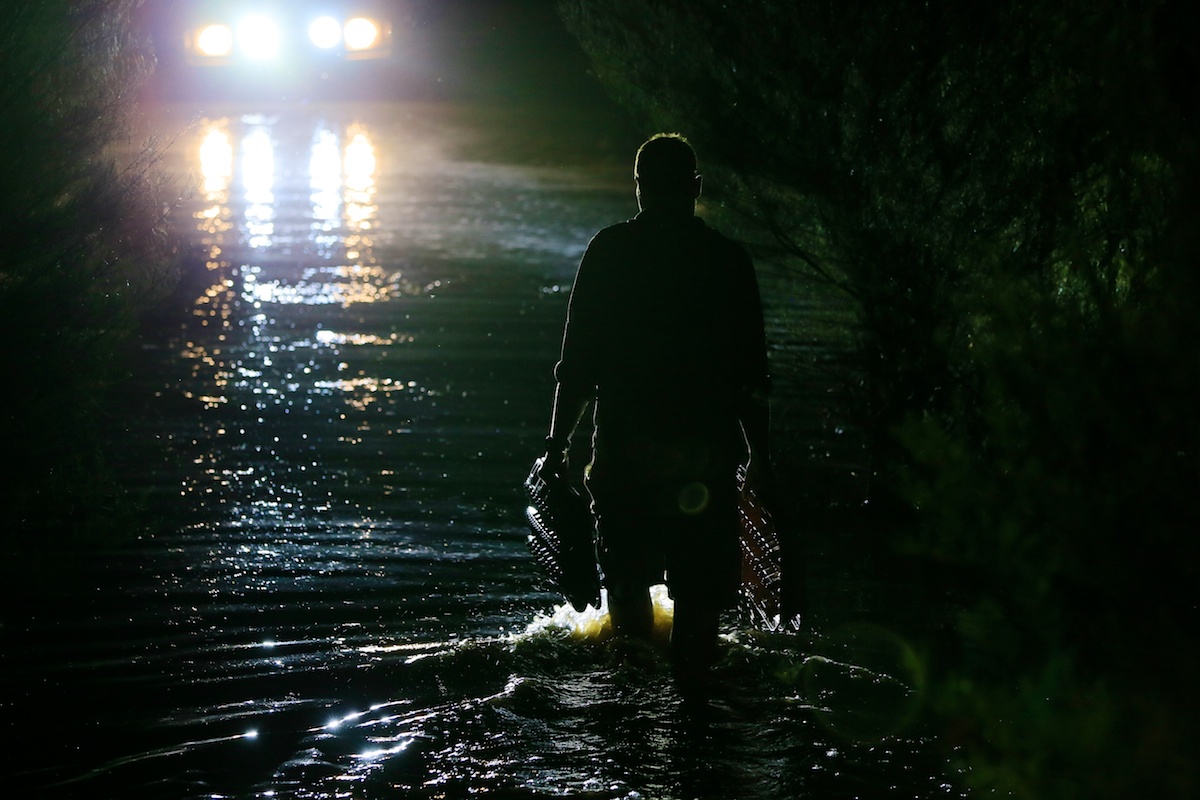
Many of us have come of age as overlanders during the decade since Expeditions 7 began. Perhaps we’ve heard of the project in passing, but the details are murky. While the seven-continent record has made headlines, the legacy of Expeditions 7 lies in the experiences along the way and the lessons they imparted to the adventurers and anyone willing to learn from them.
In commemoration of the Expeditions 7 launch, Lead Adventurer Greg Miller, Expedition Leader Scott Brady, and Adventurer/Driver Kurt Williams are sharing their personal reflections with the Expedition Portal community. Some of their anecdotes have never been published before now.
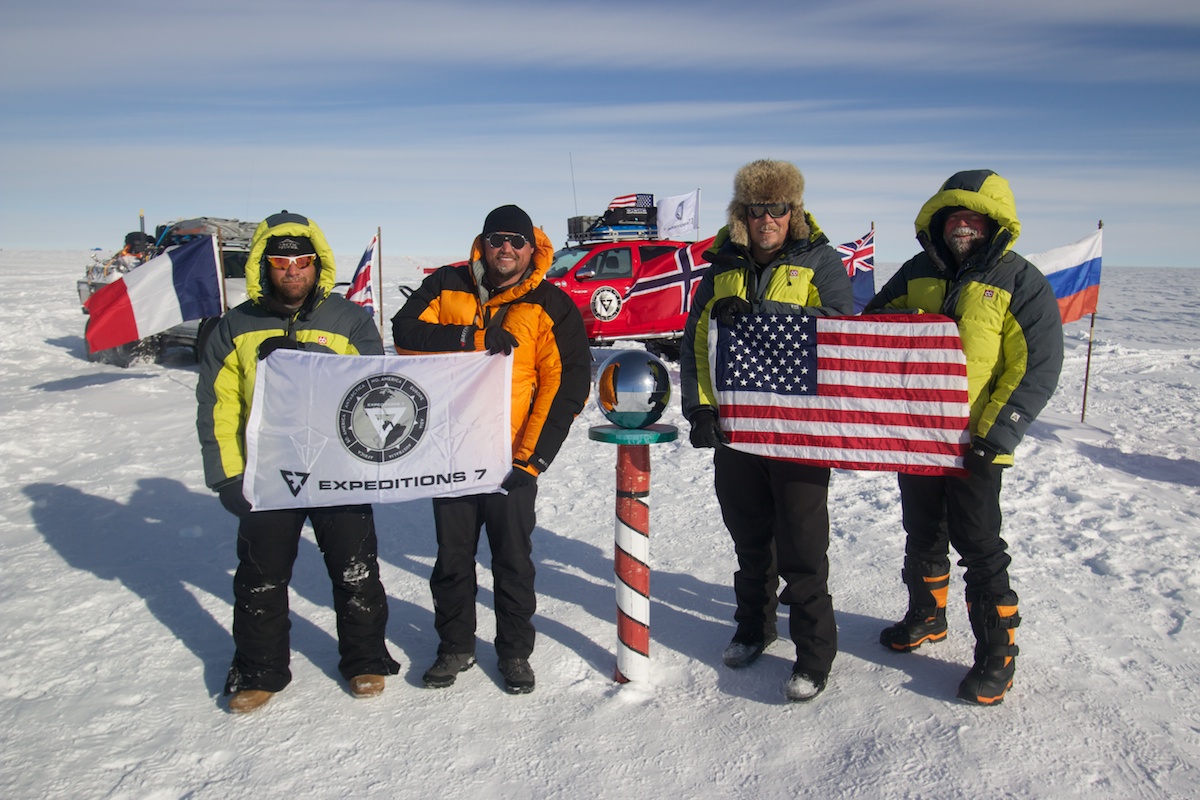
Expeditions 7: Development to Fulfillment
By 2007, Brady had fully vetted a seven-continent expedition, all the way down to mapping and meeting with a potential director. Blueprint in hand, the waiting began. The timing wasn’t quite right.
Four years later, Williams introduced Miller to Brady at an Outdoor Retailer Show after-party. As the two became acquainted, they realized they shared a vision of circumnavigating the globe by vehicle. As a Land Cruiser enthusiast and founder of the Land Cruiser Heritage Museum in Salt Lake City, Miller sought a unique designation. He wished to be the first to drive a 4×4 vehicle on all seven continents–and that vehicle would be a 78-Series Toyota Land Cruiser. Miller was the partner Brady had been waiting for.
Following a year of vigorous planning, Expeditions 7 got underway in April 2012. Miller and Brady piloted two troop carriers named Fernweh and Mateship from Prudhoe Bay, Alaska, to Salt Lake City, where the vehicles were originally outfitted by Proffitt’s Resurrection Land Cruisers. They reconnected with Williams, who was leading a trail run at the 11th annual Cruise Moab event. The San Rafael Swell area became the scene of a valuable shakedown run for the two trucks.
During those first weeks of Expeditions 7, it became apparent a third vehicle was required. Sherpa I was a 79-Series Land Cruiser meant to solve the issue of moving a camera crew and requisite gear in and out of the two-door troop carriers. When Williams was asked to drive Sherpa I to Cape Spear, Newfoundland, for the next leg of the journey, the core Expeditions 7 team was formed.

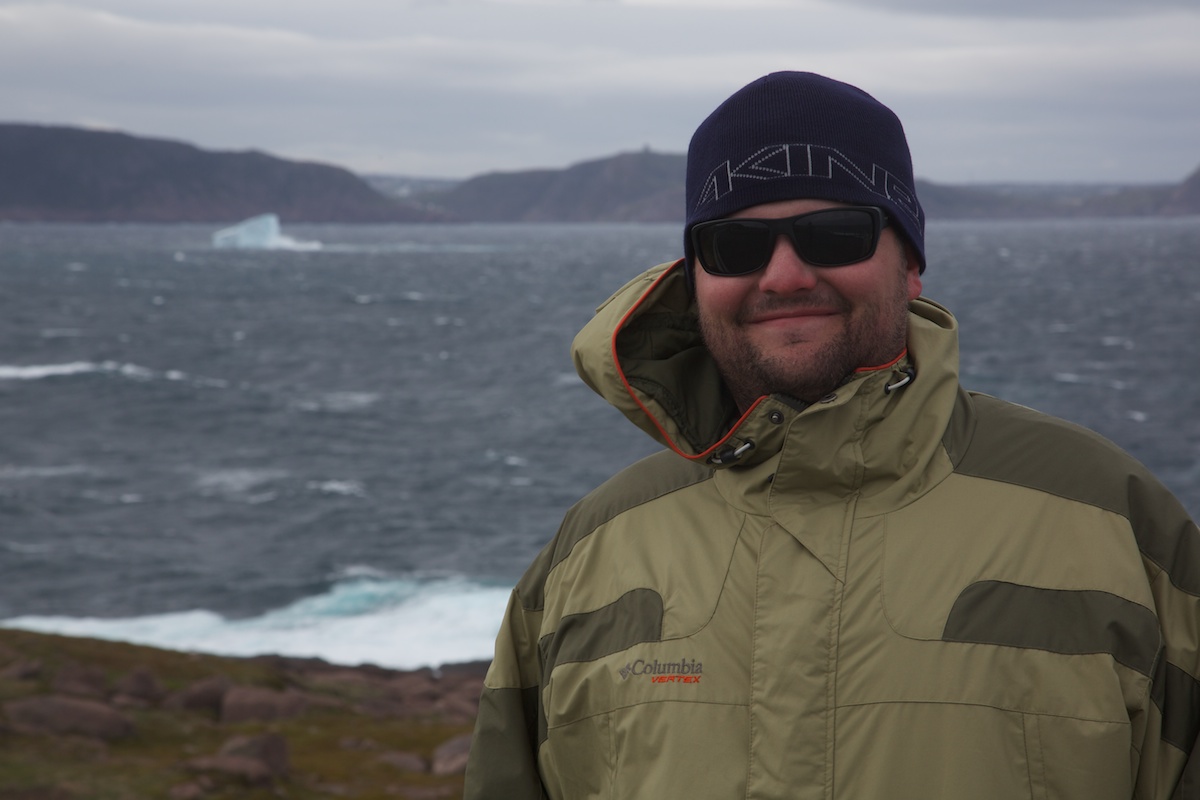
Over the following two years, Fernweh and its convoy advanced from North America to Iceland, mainland Europe, Russia, Australia, Africa, Antarctica, and finally, South America. The journey was divided into several segments, with varying participants and vehicles. Traversing more than 58,000 miles, the fleet included a total of five Land Cruisers and one AT44 Hilux, as well as more than 50 individuals. You would recognize many of those involved in the journey, given their significant contributions to the overlanding community apart from Expeditions 7, people like Ray Hyland, Bruce Dorn, Matthew Scott, Sinuhe Xavier, Clay Croft, Paul May, and Chris Collard.

Probing the Lessons of Expeditions 7
The route details have been documented through the expedition’s official website, expeditions7.com, issues of Overland Journal, and subsequent article republication on Expedition Portal. On the website, there are beautiful short films for each continent that encapsulate the high points.
Less discussed are the lessons the adventurers took away from Expeditions 7. Experienced overlanders understand how these illuminations tend to arrive unheralded in the midst of grueling recovery efforts, monotonous driving, and quiet moments of gratitude at stunning vistas few others attempt to access.
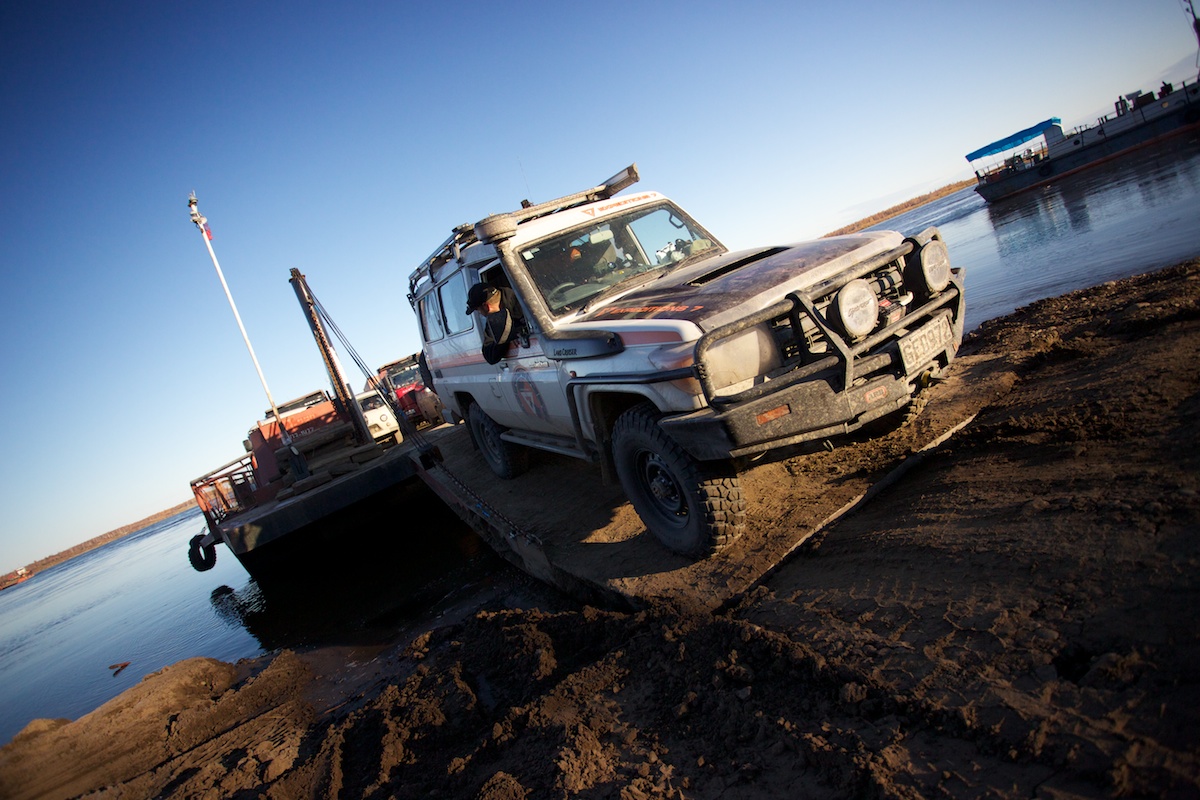
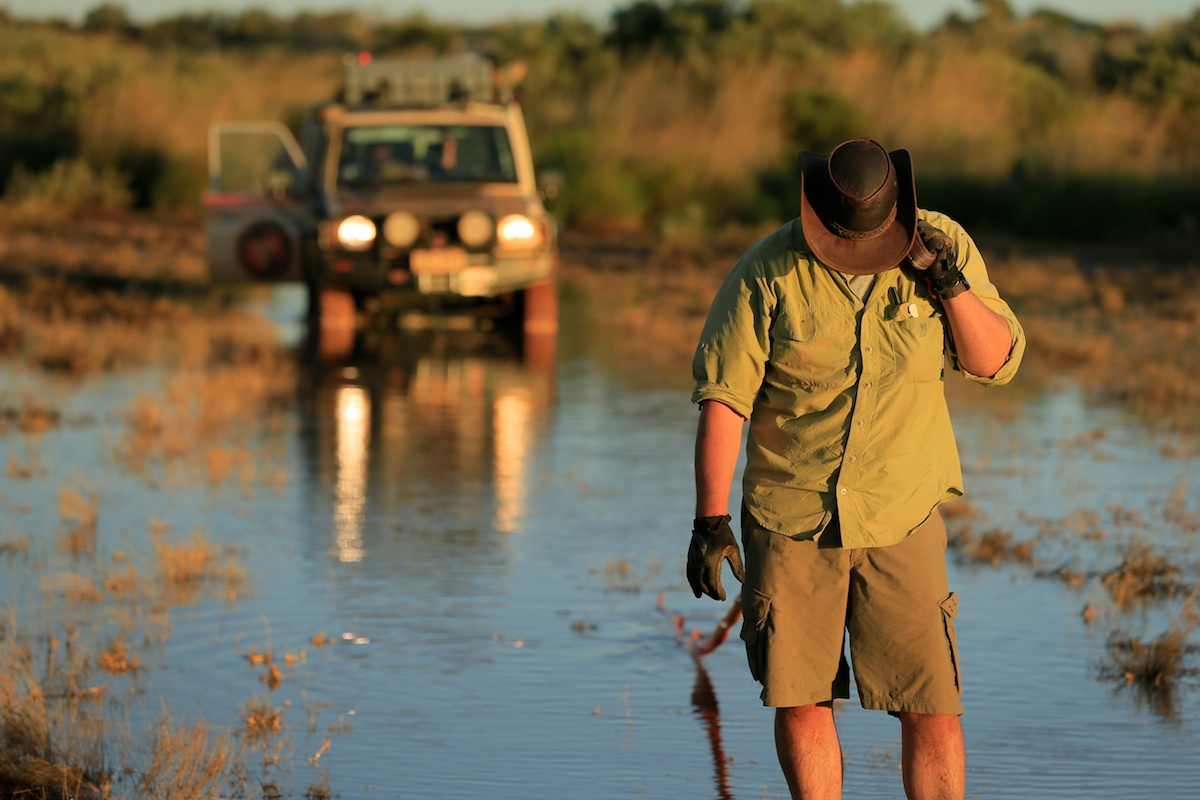
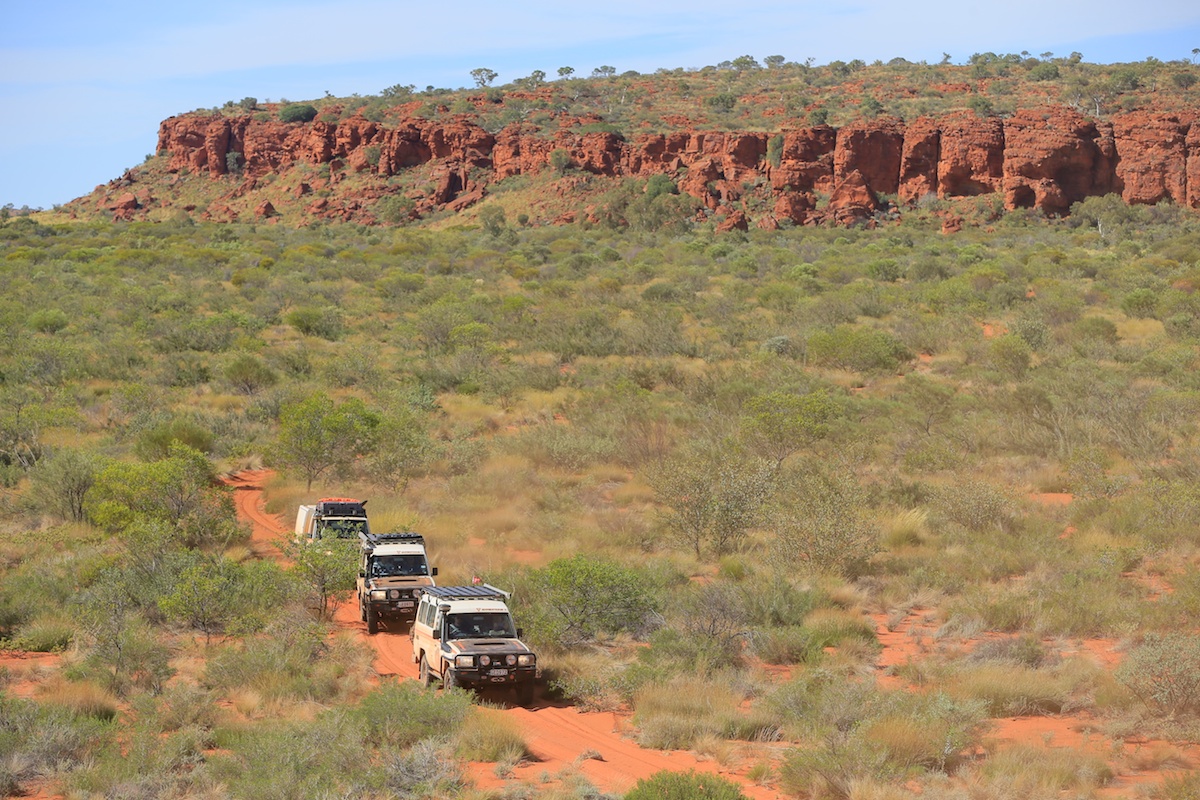


So on the 10th anniversary of this noteworthy journey’s launch, we have the privilege of doing more than merely recognizing the event. We can also learn. “Expeditions 7 was full of lessons, many of which I would call life lessons,” Williams told me, “confidence in myself as a driver, making critical decisions as a team member, and learning from the great leaders we had in Scott and Greg, both of whom I admire and consider mentors in my life.”
Based on interviews with Miller, Brady, and Williams, here are several practical lessons we can glean from the two years and 58,000 miles they invested overlanding on all seven of the world’s landmasses.
Simplify Decision-making With a Clear Objective
During any ambitious overland trip, pieces of the puzzle are bound to drop out of place. Sometimes a breakdown, regional conflict, or weather event can jeopardize plans, calling into question whether the traveler will reach the intended destination.
I asked Brady how he evaluated when to persevere through hardship versus cutting his losses and making changes during Expeditions 7. He responded, “The goal was clear from the beginning, which made all the subsequent decisions much easier. Greg and I were tightly aligned on achieving that singular goal. As a result, we made numerous plan changes and execution shifts to stay on task. We fired drivers that lacked the required skills to pilot the Land Cruisers safely, we cut out segments of trips, or worked with fixers to stay on track.”
Clearly, defining the journey objective is a fundamental step. The goal could be as simple as evading internet connectivity for an entire week or as complex as navigating to the northernmost point of a continent. We can use our objective as a framework for meeting subsequent challenges, determining whether to push through or let plans fall with a flexible spirit.
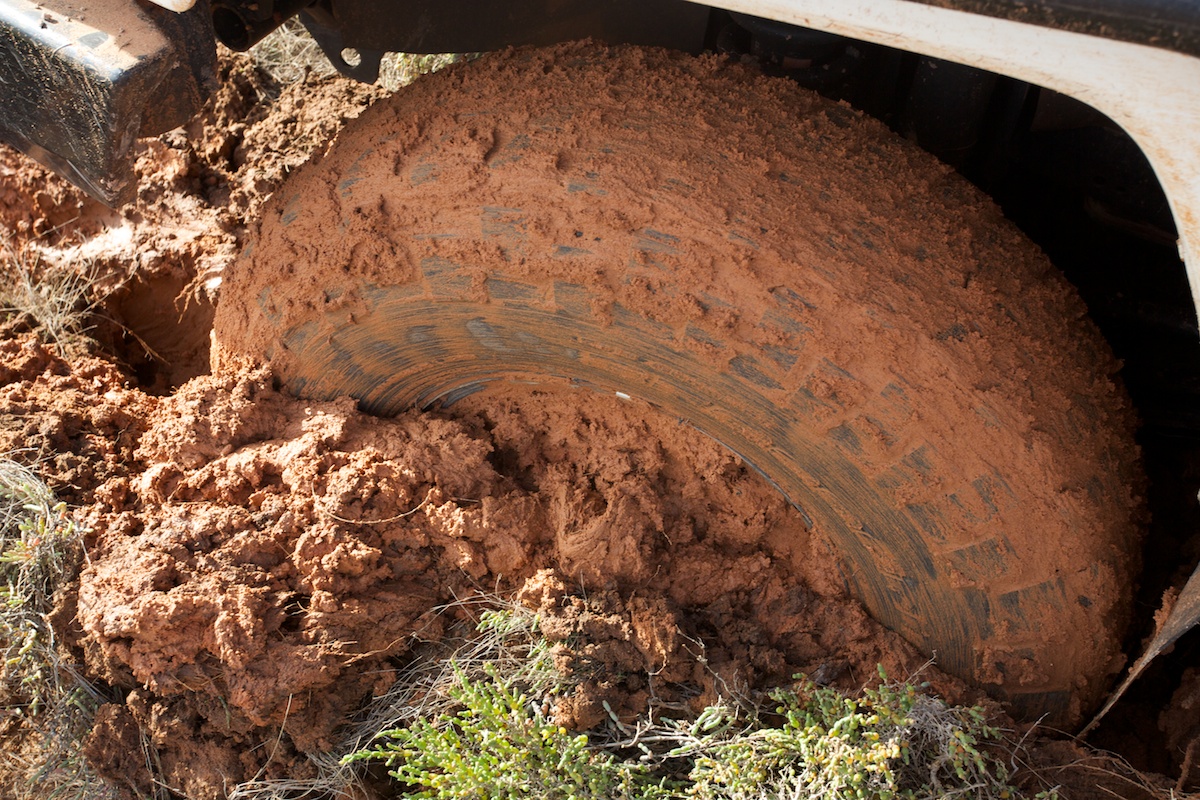
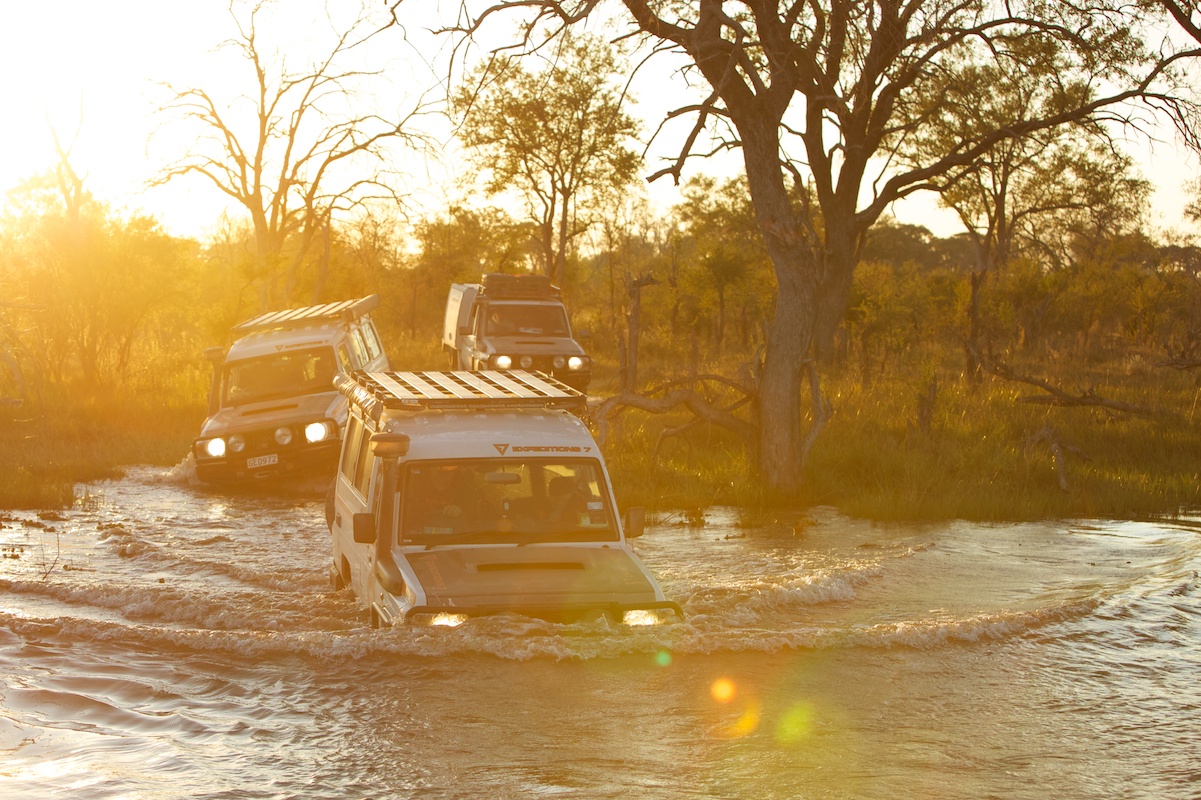
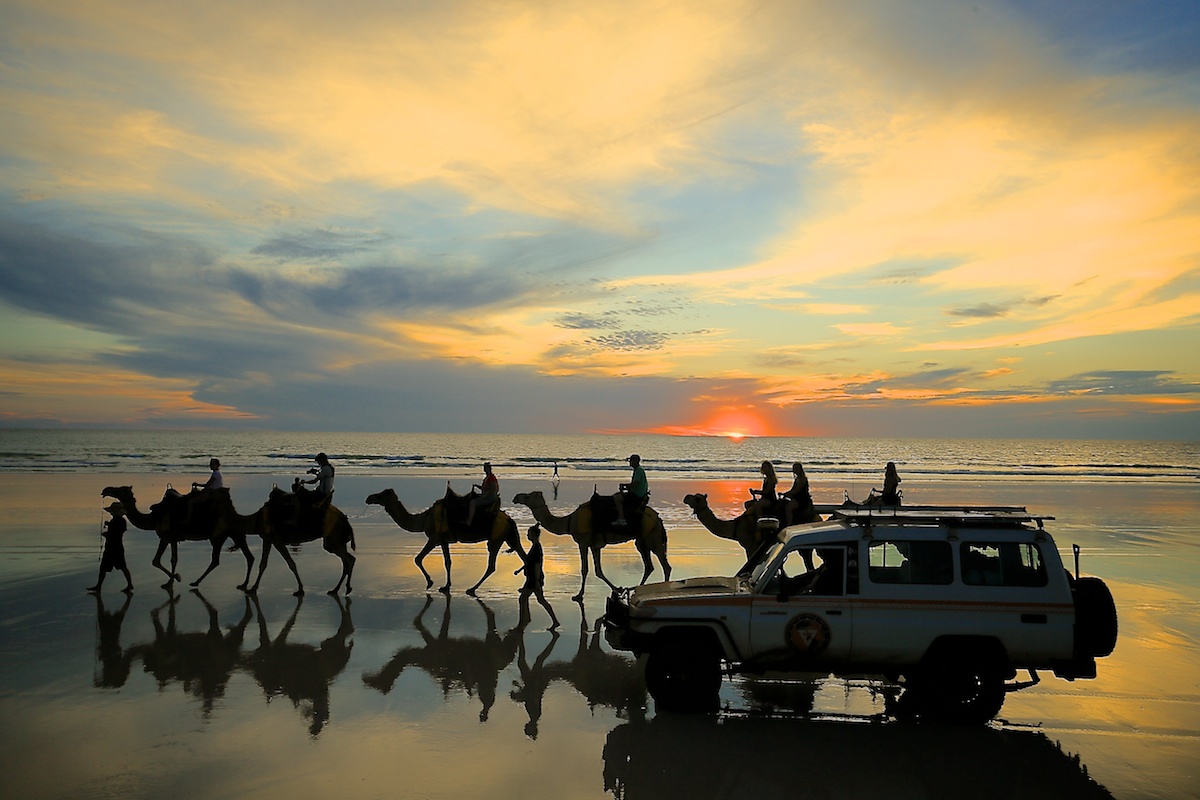
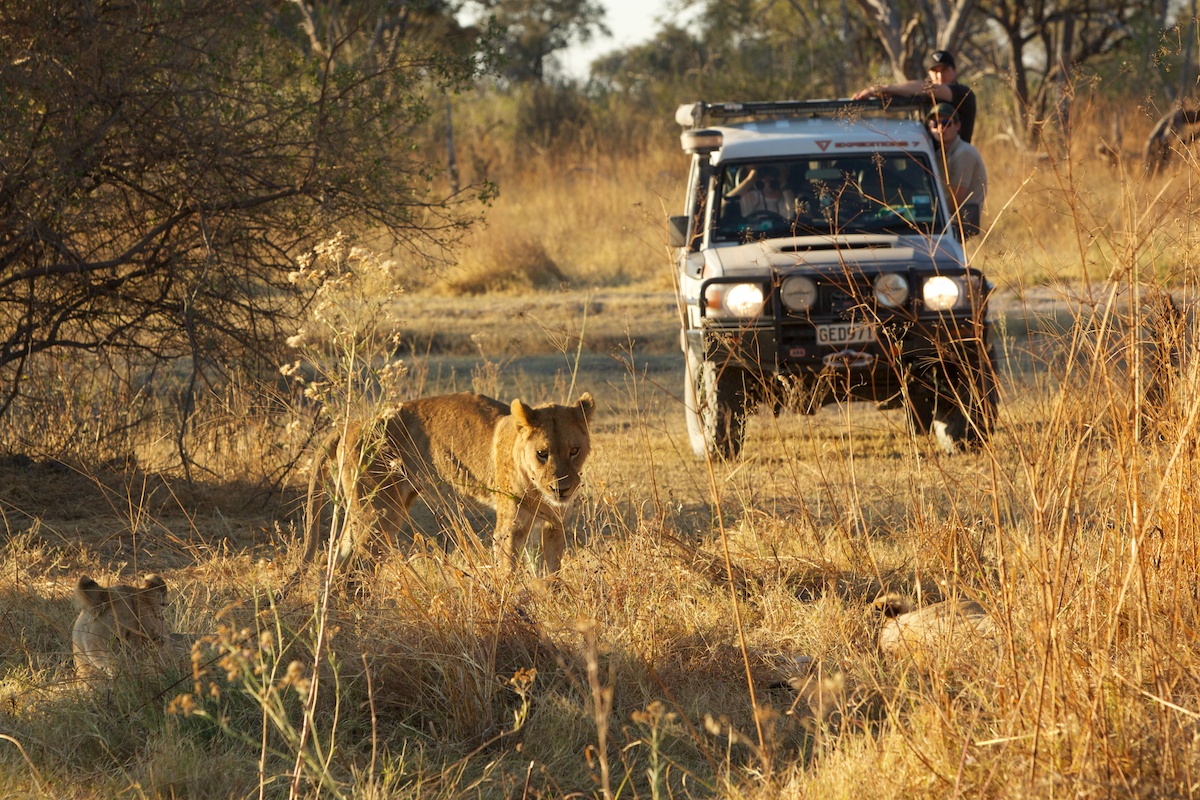
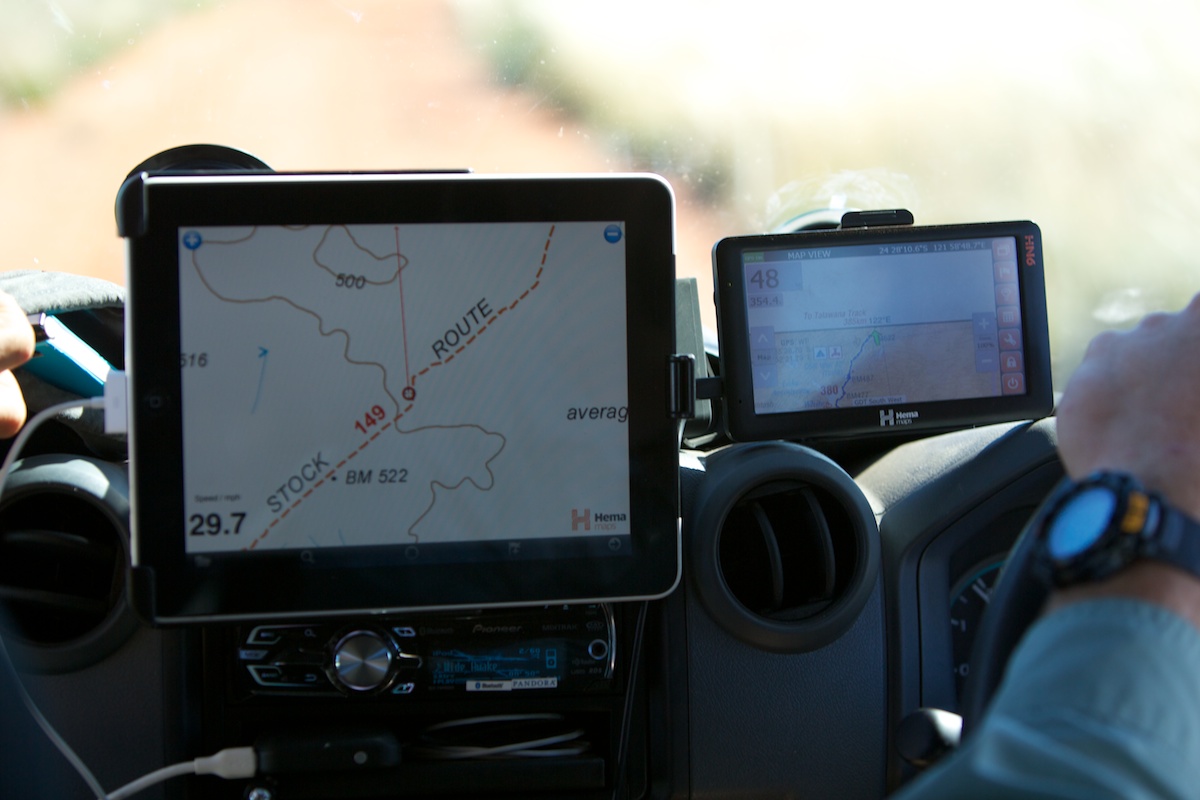
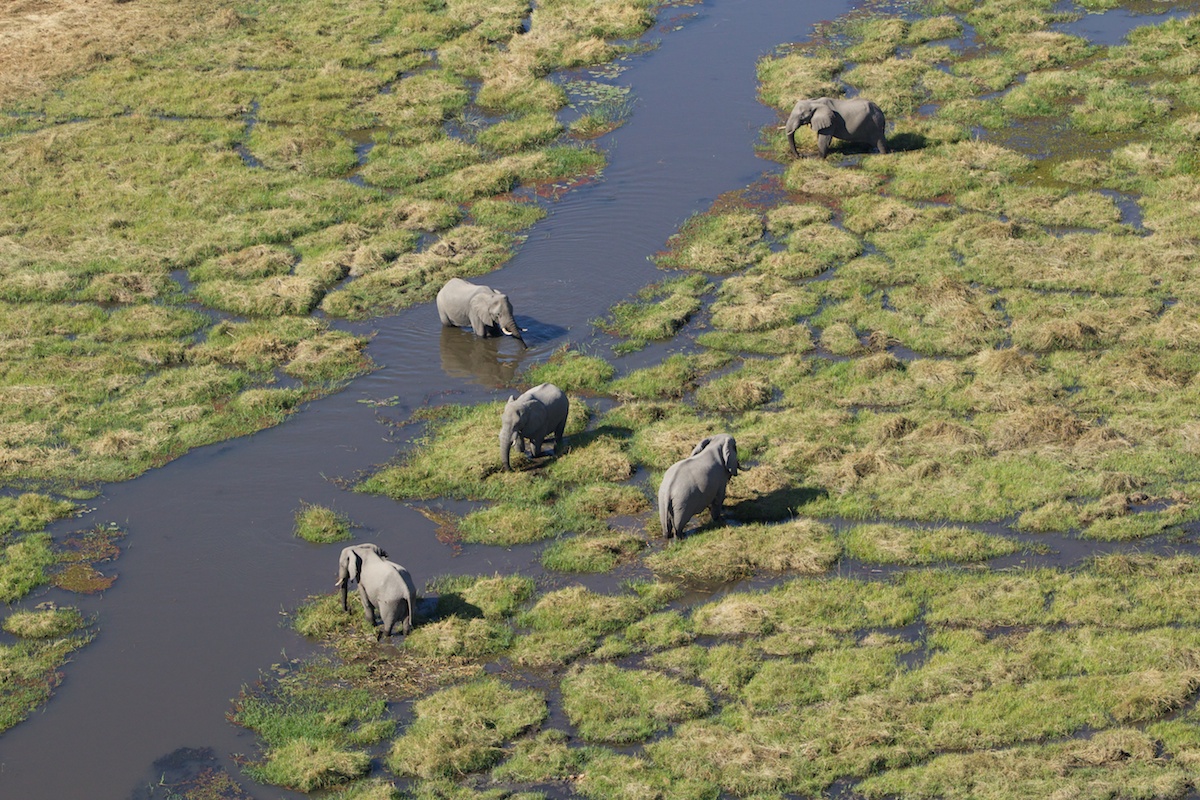
The Vehicle Is a Tool
The present-day overlanding community in the United States has a growing obsession with vehicle build-outs. Expeditions 7 was vehicle-focused by definition, with the core objective of driving one Land Cruiser on all seven continents. However, the intercontinental team concluded their journey with a fresh appreciation for vehicles as a means to an end–not ends in themselves. Brady recounted, “I would often extend my time in a country after the rest of the team would leave, and that allowed me to engage more as a traveler. Sometimes that meant the Land Cruisers were already gone, and I explored by any means available. I knew in my head that the vehicle is just a tool, but it takes time to know it—to let that part of the ego rest and just smile while bouncing along in a tuk-tuk.”
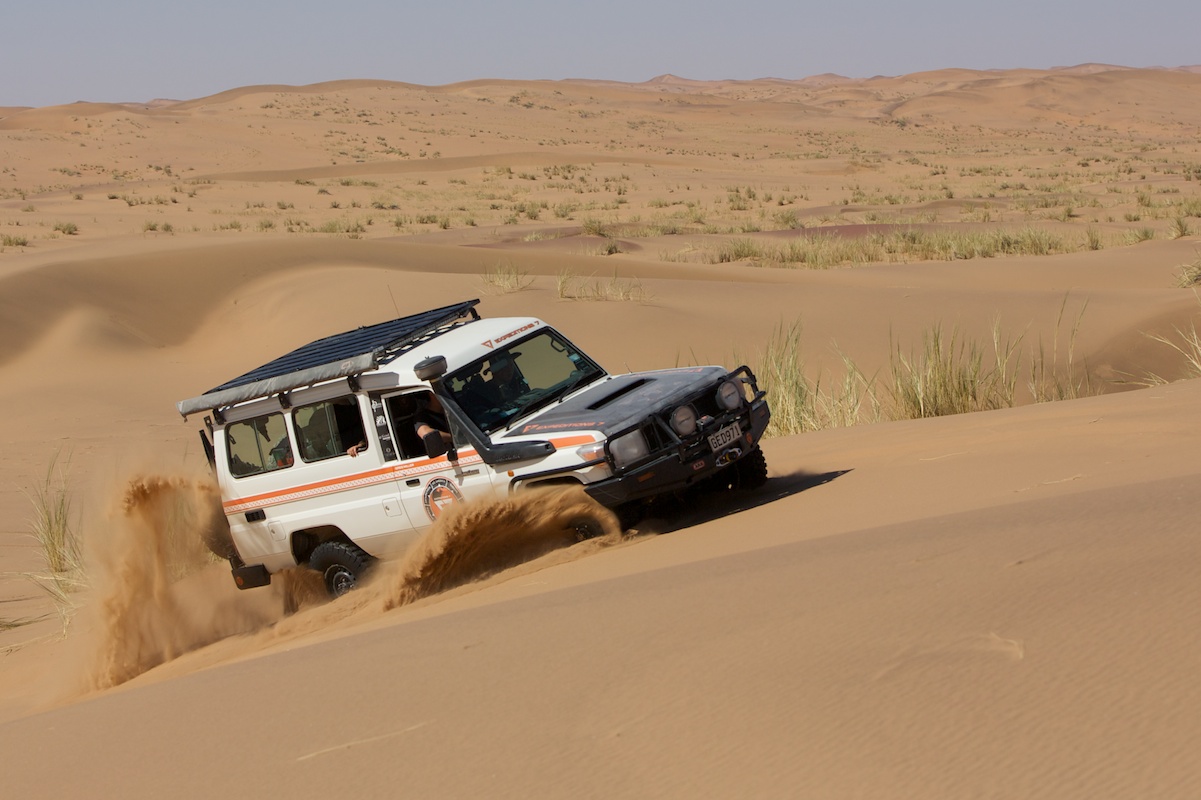
For those newer to overlanding, Williams is often recognized for his role in Expedition Overland (XO). The popular series is a lodestar for many designing their own vehicles. Yet, for all his knowledge around highly equipped rigs, his approach aligns with Brady’s. “I’m fairly low-key in my personal vehicle and travel kit and growing more simplistic as time and experiences prove it easier. I’ve been down the road of too much gear, complicated systems, and heavy vehicles and found that I have a better experience when I camp out of a vehicle like I do when I’m camping off my motorcycle, for example.”
Understanding your vehicle as a means to an end is a freeing concept in dual respects. By avoiding an unnecessarily complicated setup, the traveler is able to focus outward on the experiences we’re all pursuing as overlanders. Simultaneously, the monetary resources we choose not to spend on our vehicle and kit can instead be invested in traveling farther and longer. Expeditions 7 modeled a purpose-driven approach to vehicle outfitting, with each modification serving a defined aim.
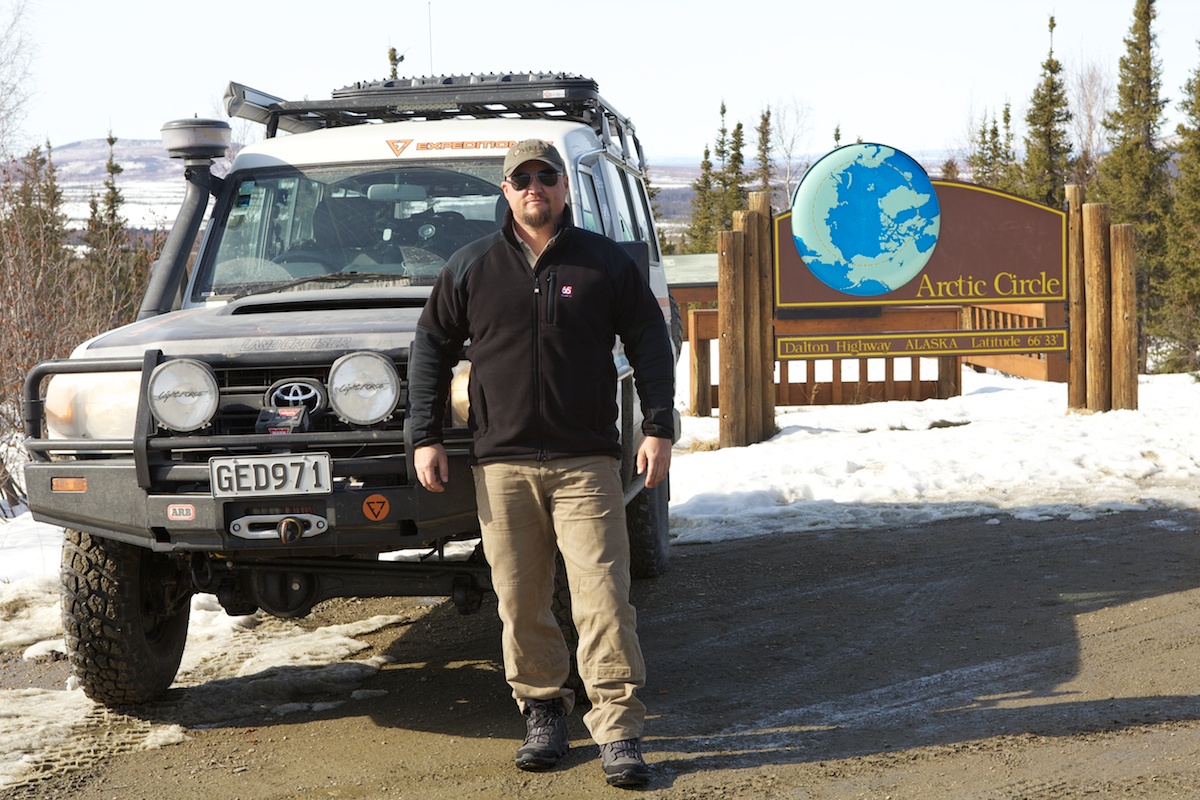
Assessing Fitness to Drive
Like every true expedition, the logistics necessary to accomplish Expeditions 7 required a careful dance. Because extreme distances had to be crossed on a timeline, the expedition members found themselves facing grueling travel days. Perhaps the most representative example occurred on Antarctica, where the team crossed the continent in nine days from Novo to the Ross Ice Shelf. Having reached their destination, they returned to Novo, covering the same distance in five days. On their return trip, the largest drive stretched to 40 hours long, and expedition members suffered from undernourishment as they relied on quick snacks along the way.
Even so, Brady carefully assessed risk. Of the expedition as a whole, he said, “I stopped the convoy many times because we were simply out of drivers ready to operate the vehicle safely. While it is mostly luck, I have never had an accident on any trip. I believe it is because I never drive impaired, and I swap or stop if I am not feeling up to the job.”
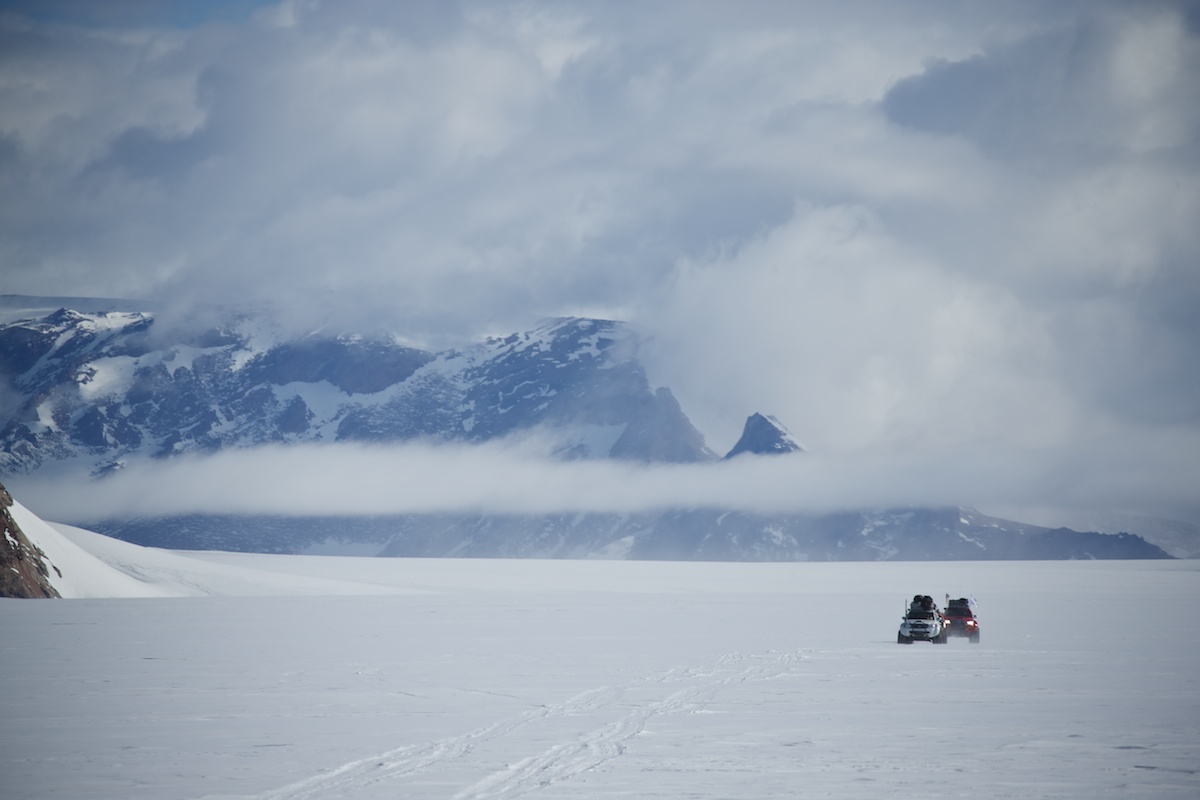

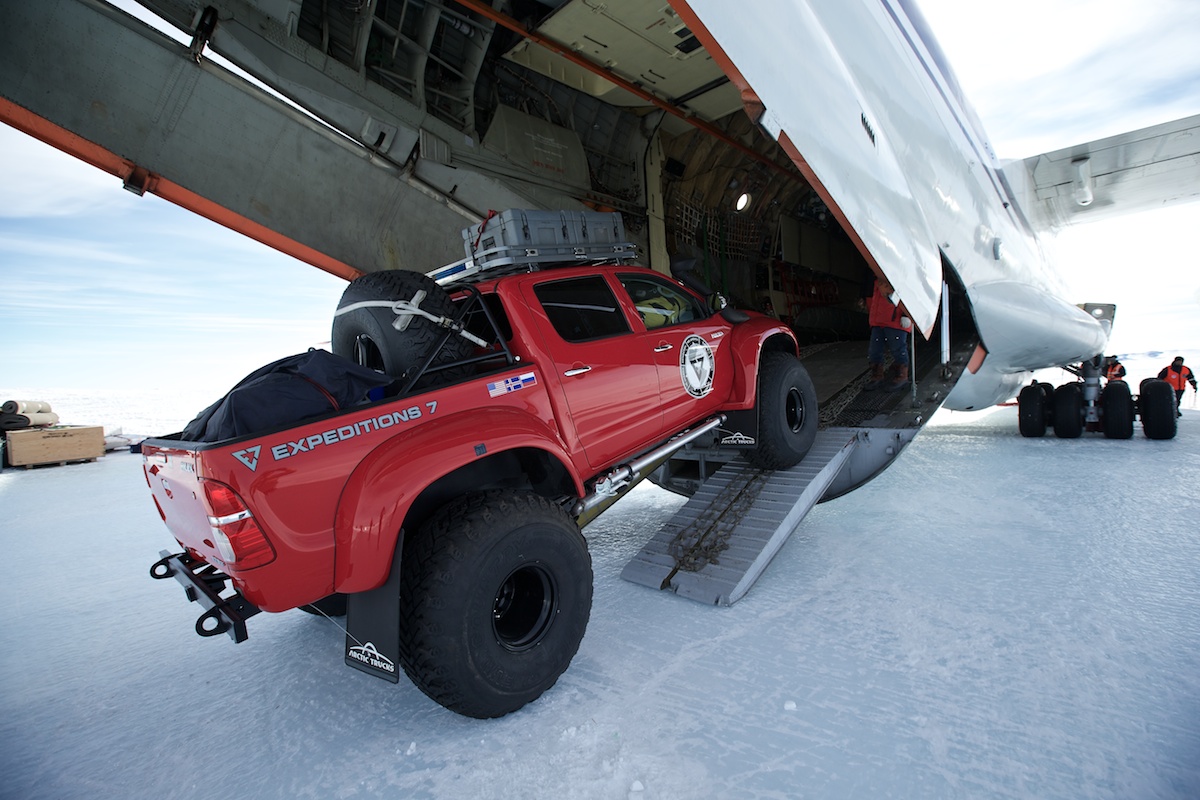
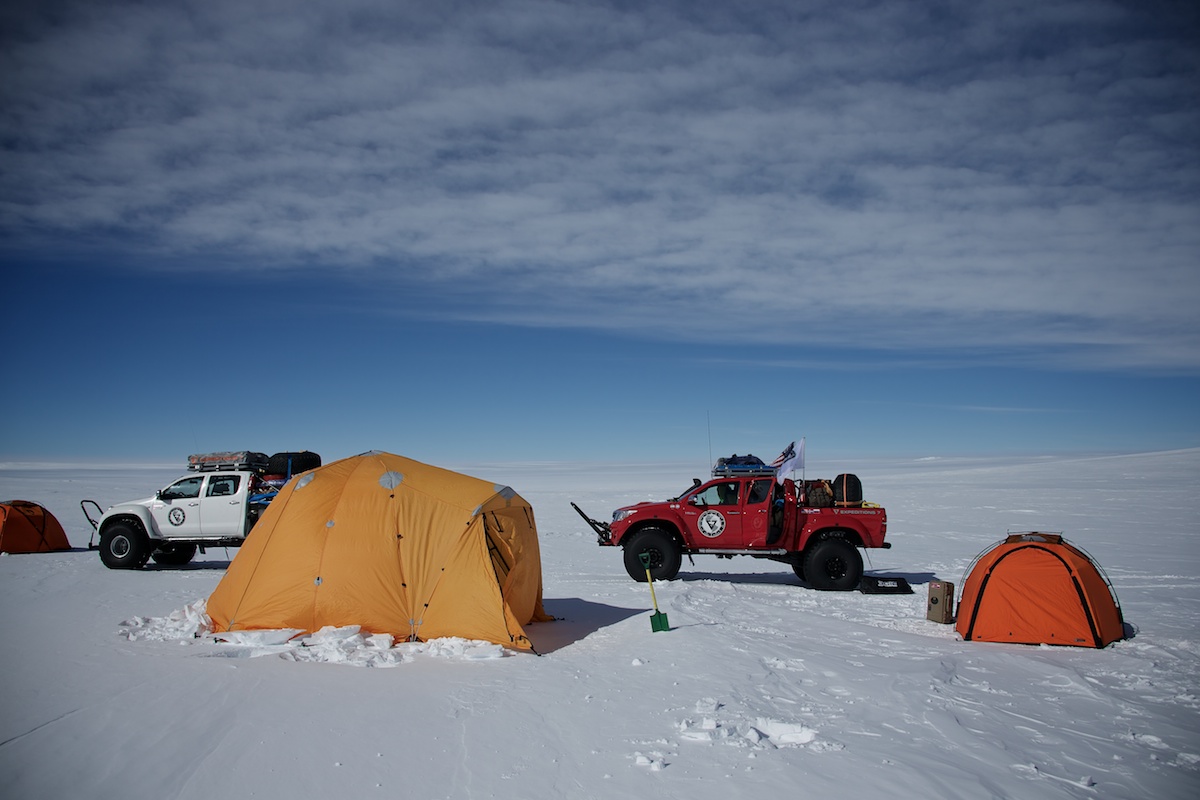
Through experience, Brady has determined every driver has two jobs: “The safety of the other occupants in the vehicle, and mechanical sympathy and preservation of the vehicle itself.” If a driver senses they cannot protect the integrity of both, then it’s time to switch out with another person. When there is no one available to perform the two jobs, there is no acceptable alternative but to stop and sleep.
While few of us will ever face the need to drive 40 hours straight, we would do well to remember our active responsibility as drivers: to ourselves, our passengers, and others on the road.

Knowledge We Earn Enriches Everything That Comes After
Travel pays dividends for a lifetime. Beyond the inspirational quality of the memories we make, there’s a practical side. The knowledge we gain through experience enriches our subsequent travel by teaching us to do more with less and encounter challenges with greater composure.
One might expect an adventure as big as Expeditions 7 to overshadow everything that followed. How could anything else compare? On the contrary, Williams said Expeditions 7 made him want to overland even more. “Expeditions 7 only served to amplify my love for international overland travel….Through Expeditions 7 and the many logistical issues presented with such a massive endeavor, I learned that with patience and ingenuity, you can work through all of the problems international travelers often encounter. Things like bribes, borders, paperwork, fuel supply, and establishing connections with experienced locals to make a trip more successful.”
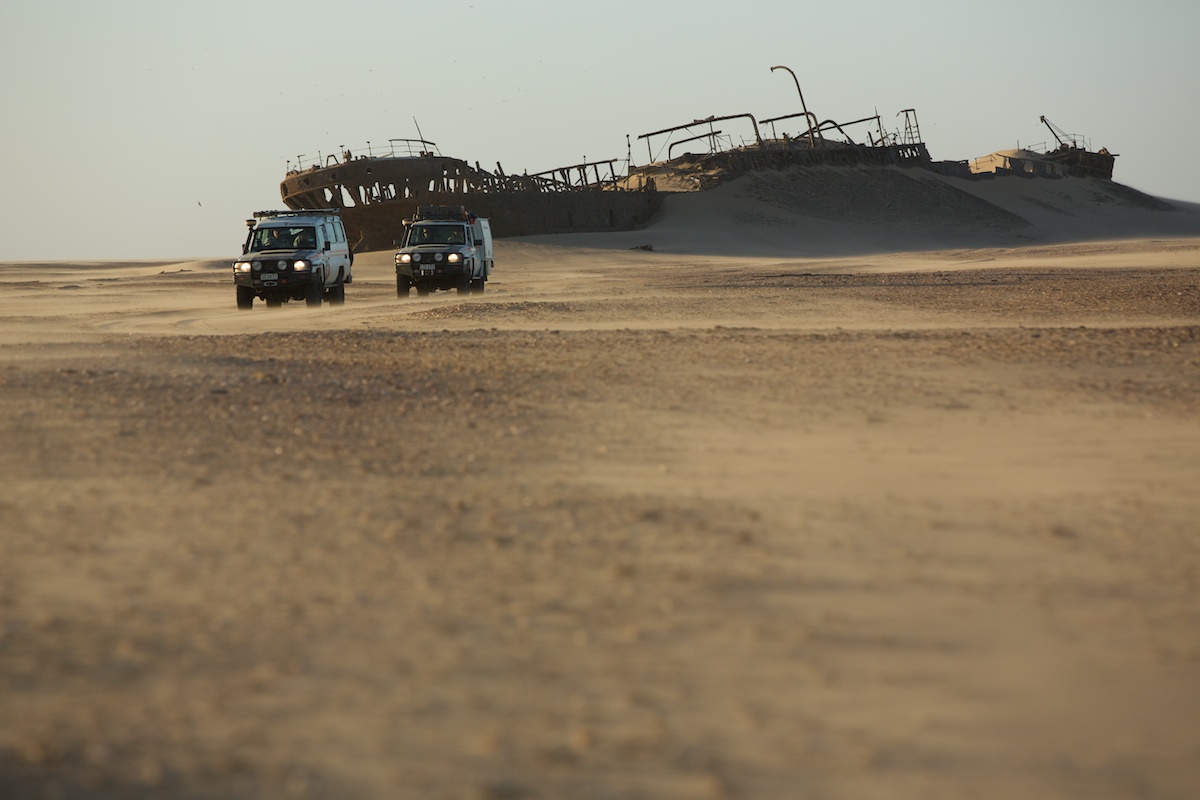
We’ll Remember the People Around Us
As I listened to Miller, Brady, and Williams, I noticed a refrain. Woven into stories of incredible places were vivid memories of the companions within arm’s reach. “When I talk about my biggest takeaways from my E7 experiences to date,” Miller said, “I always mention the fact that I traveled with a handful of people, often within earshot 24 hours a day for a duration of weeks, in stressful and challenging situations, sleep-deprived and low on nutrition, overcoming one challenge after another, and never hearing a cross or disrespectful word spoken.”
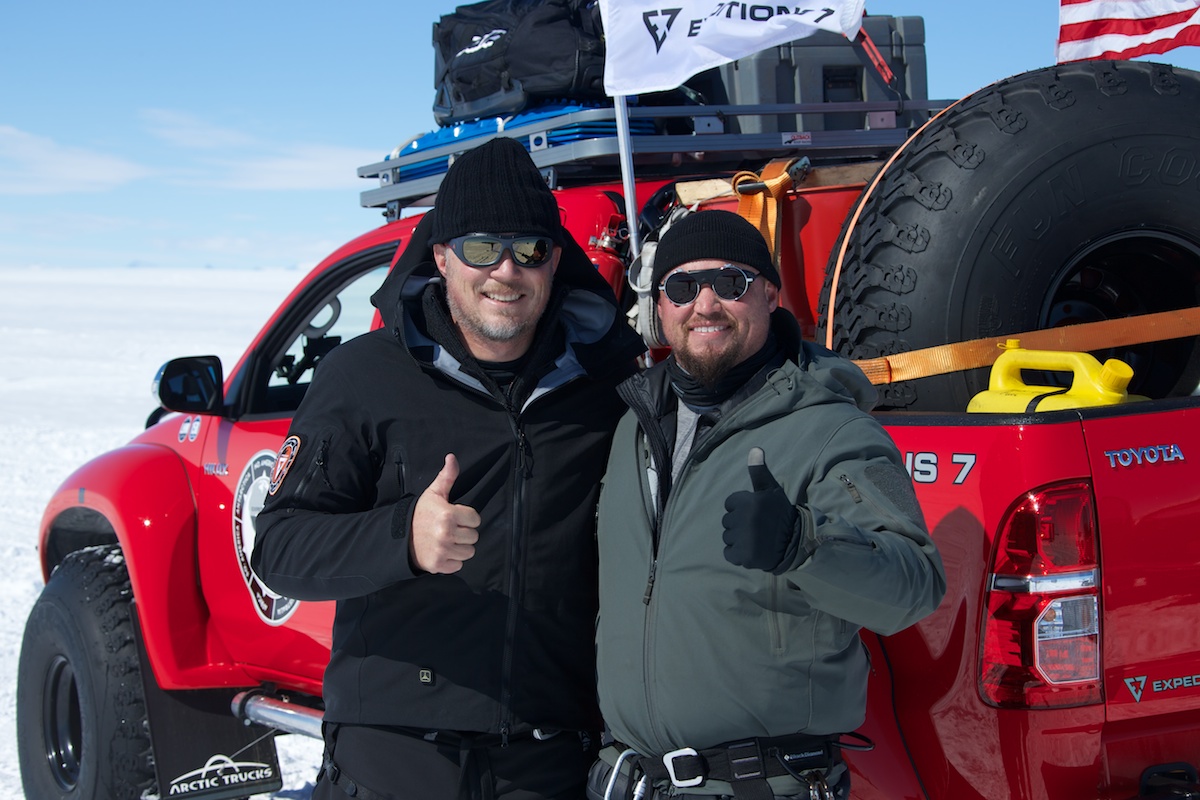
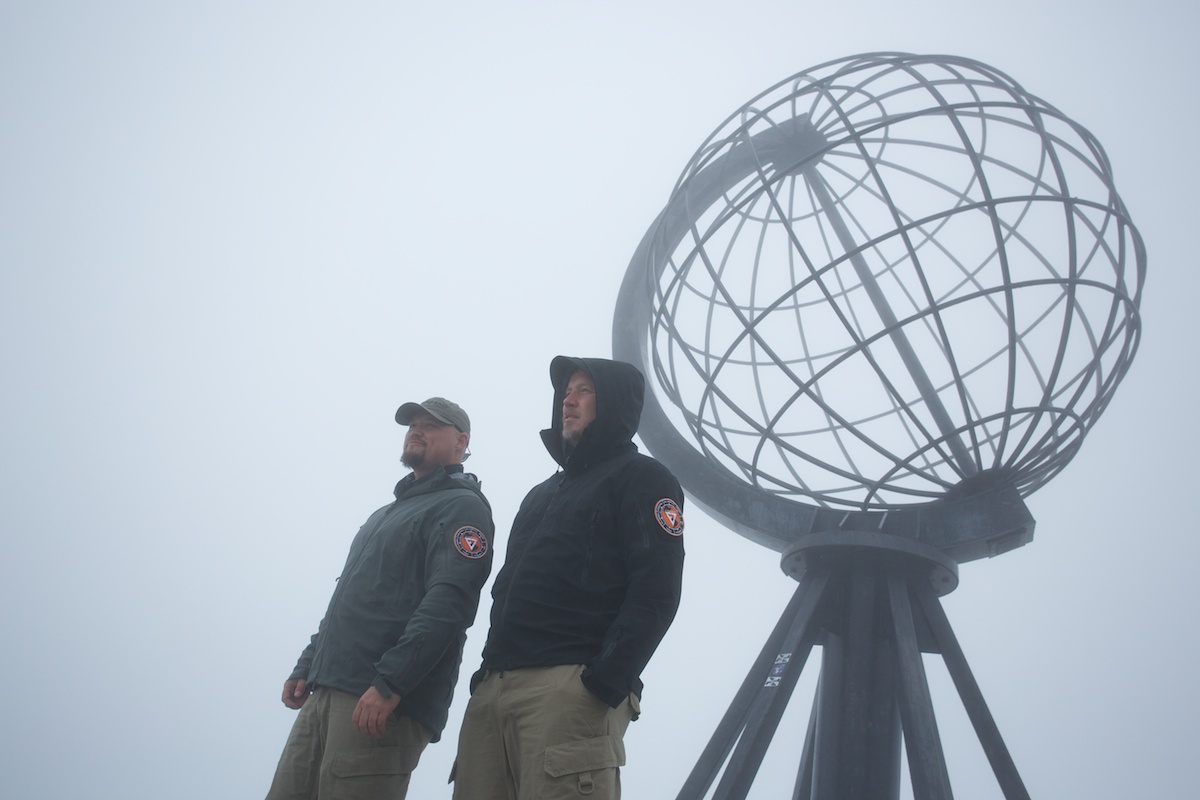
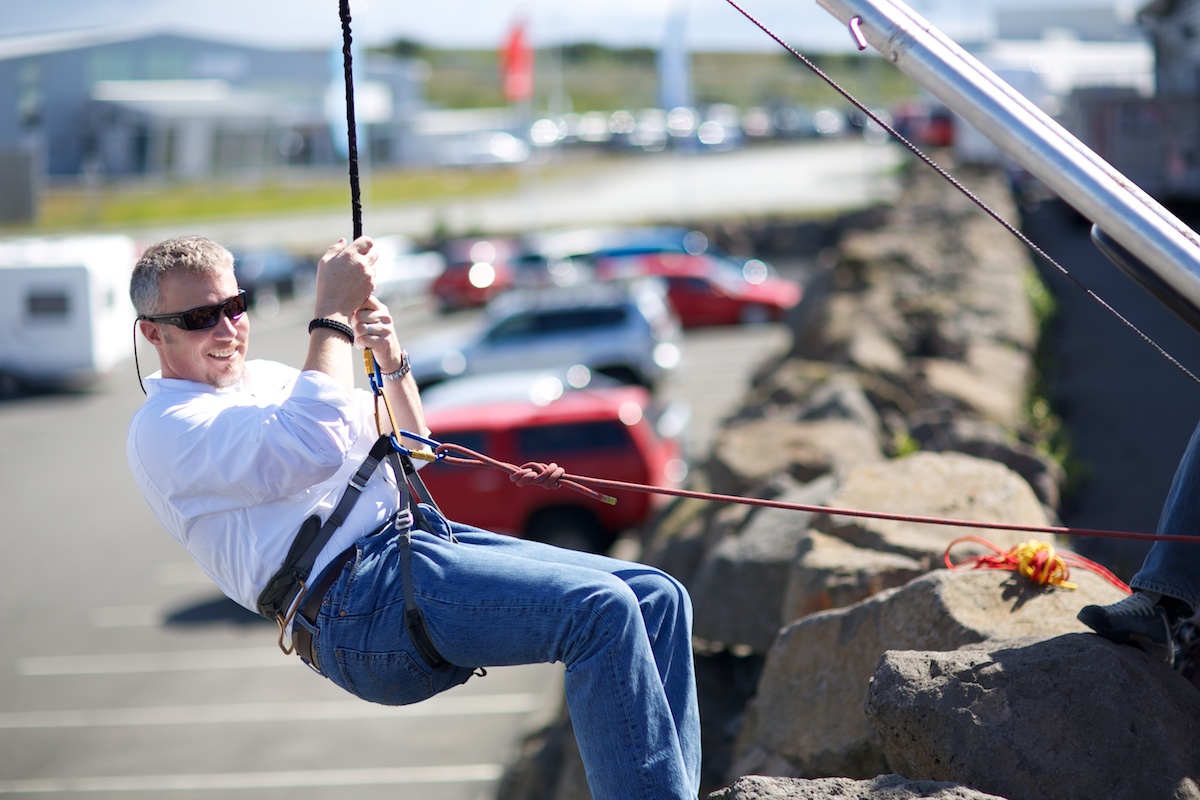
Independently, Brady stated the same. “I cannot remember a single heated disagreement in all the years of the expedition….I watched all of my teammates grow and become more open-minded, more tolerant, more caring. Yes, we took an awesome Land Cruiser to all seven continents, but I rarely think of that. I think of Greg, Kurt, Bruce, Kyle, Clay, Sinuhe, Emil, and the dozens of other people that I traveled with around this glorious planet.”
For Williams, the friendships nurtured during Expeditions 7 had a profound impact on the course of his life. “Expeditions 7 opened many doors for me, most notably my participation on the X Overland Team. While Clay [Croft] and I had met prior to Expeditions 7, we really got to know each other during the Russia segment, and the weeks we spent traveling across Siberia. Fast-forward and I had just finished the South and Central America Expeditions 7 segments. Clay and the XO team were planning to continue their Pan-American journey by driving from the US to Panama. He and I had been talking through much of the logistics, timing, border procedures, etc., and at some point, he simply said, ‘Would you be available to go?’ I was humbled and elated at the opportunity and have since been fortunate to spend a great deal of time traveling with the team throughout the US and internationally.”
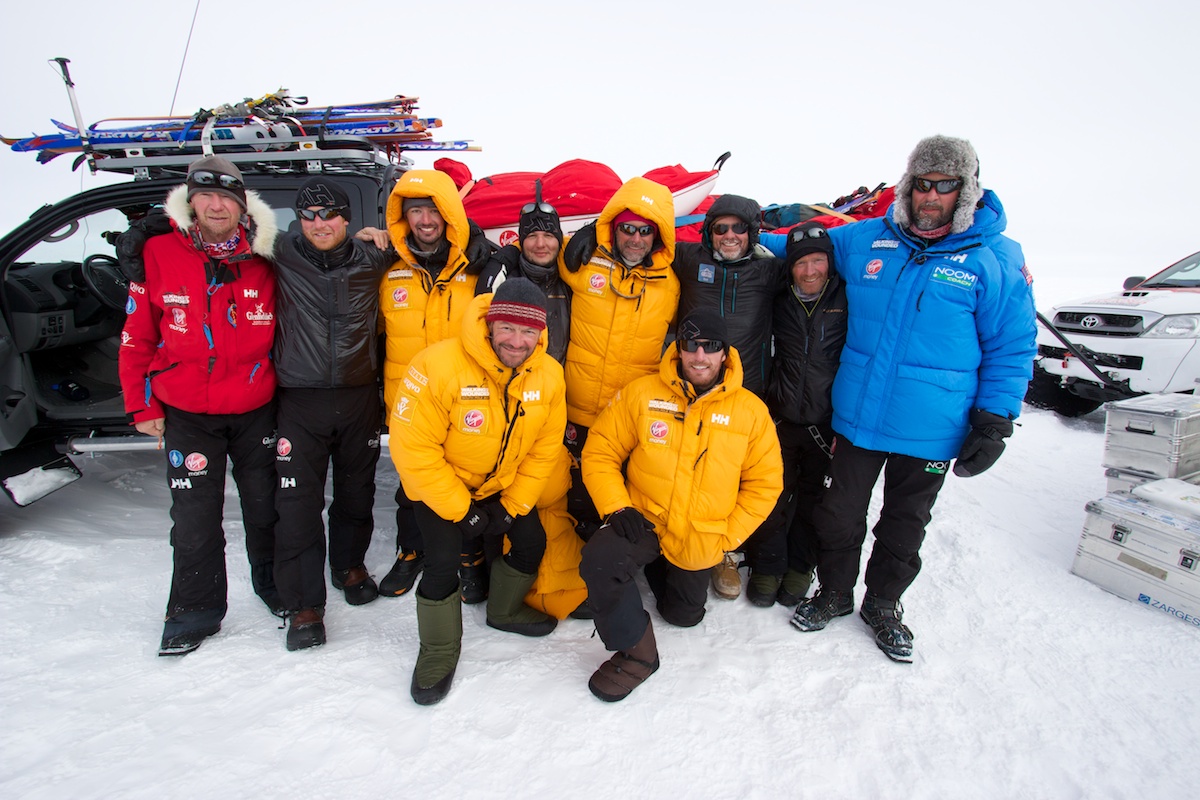

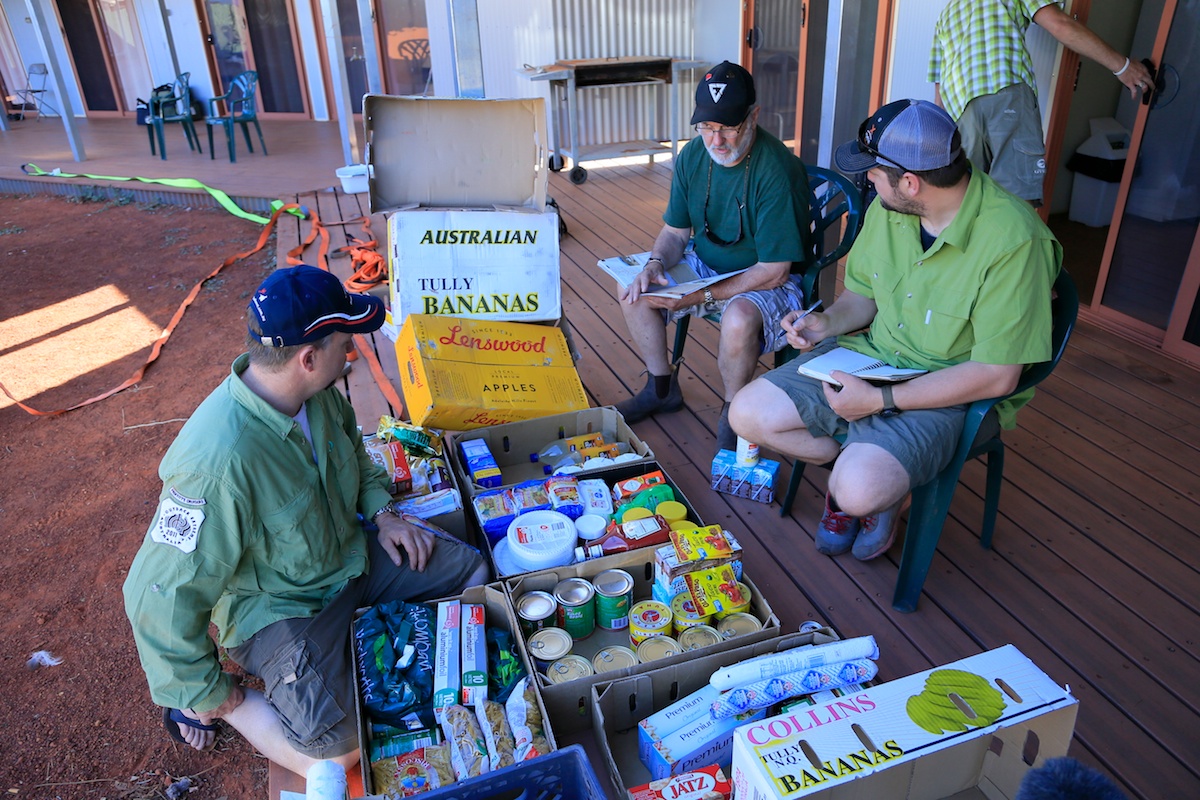
Adventure Takes Many Forms
Perhaps the most relevant lesson from Expeditions 7 is that adventure can take many forms. We don’t need the vehicles, money, free time, or experience required to place the same 4×4 vehicle on all the world’s continents. Working with far less, we can create satisfying and memorable adventures of our own.
Though the core team of Expeditions 7 has earned distinction for their many accomplishments, you might be surprised by the way they normally travel: simply.
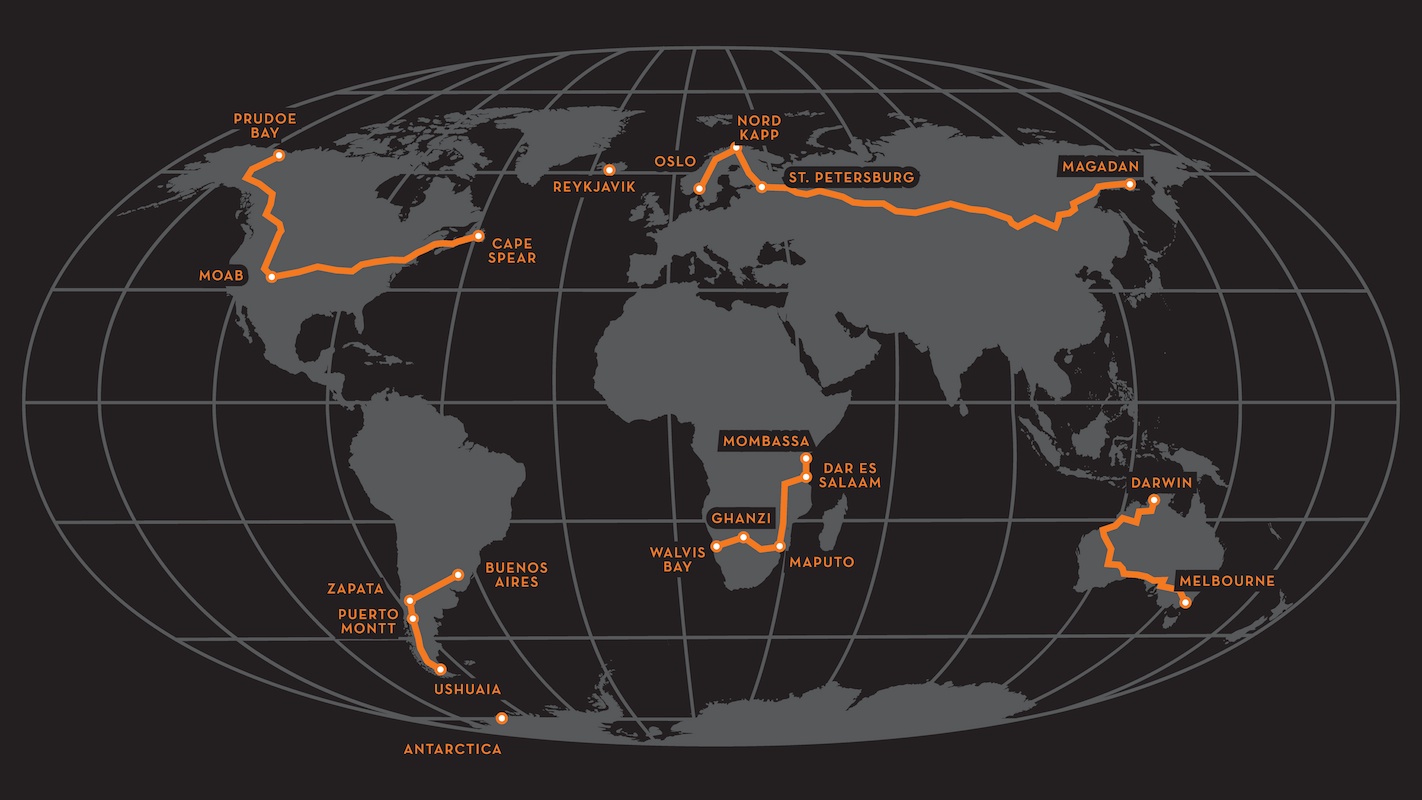
For example, Williams recently spent a few weeks in Saudi Arabia with a rented Toyota Fortuner, sharing expenses with three others and primitive camping for most of the trip. “It was a very approachable and affordable trip, less than a typical cruise or Disneyland vacation many consider a standard. I’ve done similar trips to Peru, Panama, Mexico, Puerto Rico, etc.”
Miller openly recognized, “Expeditions 7 was an apex experience of my life.” But he went on to explain how adventure takes multiple forms for him, as well. “I think it would be accurate to say I enjoy camping in a tent with my grandkids in the backyard as much as I enjoyed driving to the South Pole. The scope, scale, and flavor of the two could not be further apart, but both enrich my life.”
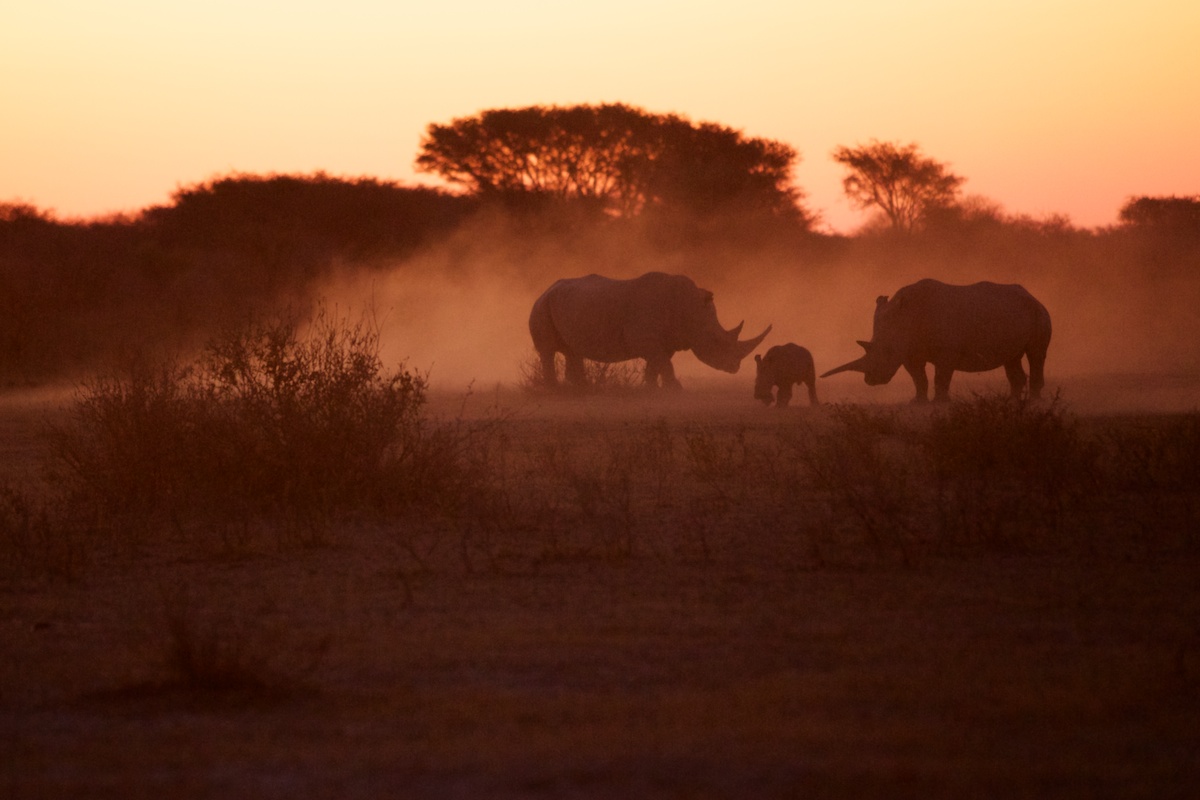
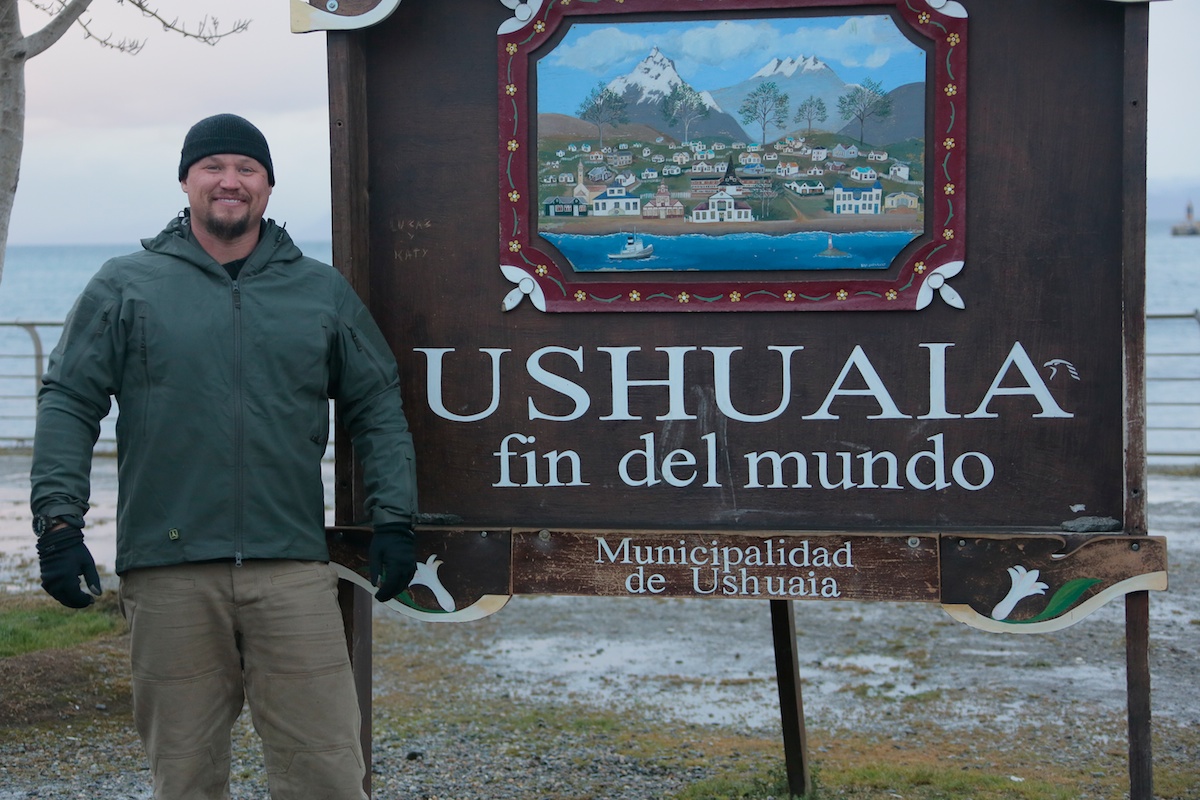
Looking Toward the Next 10 Years of Overlanding
A cursory internet search reveals Expeditions 7 has been inexplicably underpublicized, considering the accomplishment it represents. Along with their team members, Miller, Brady, and Williams represent the heart of overlanding, which is more fundamental and dear than graphs of rocketing industry growth could ever show. And the lessons they impart from experience feel more relevant than ever to today’s community.
Another 10 years from now, when we celebrate the 20th anniversary of Expedition 7’s beginning, I want to recognize the community I cherish. For that to happen, all of us who consider ourselves part of that community have a responsibility to pour our hard-earned wisdom into the deep well of experience carved by overlanding pioneers. We must keep the well uncovered and accessible for coming generations of land travelers. That is how we maintain the legacy and identity of overlanding, equipping others to achieve their own firsts that will stand forever.
Our No Compromise Clause: We carefully screen all contributors to ensure they are independent and impartial. We never have and never will accept advertorial, and we do not allow advertising to influence our product or destination reviews.


